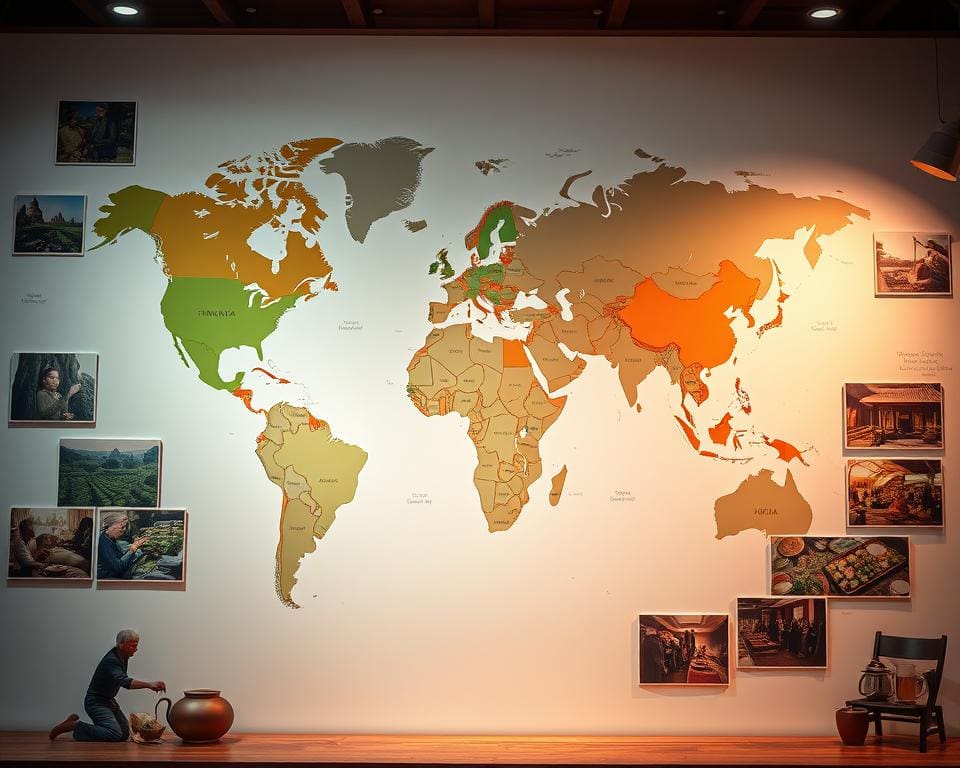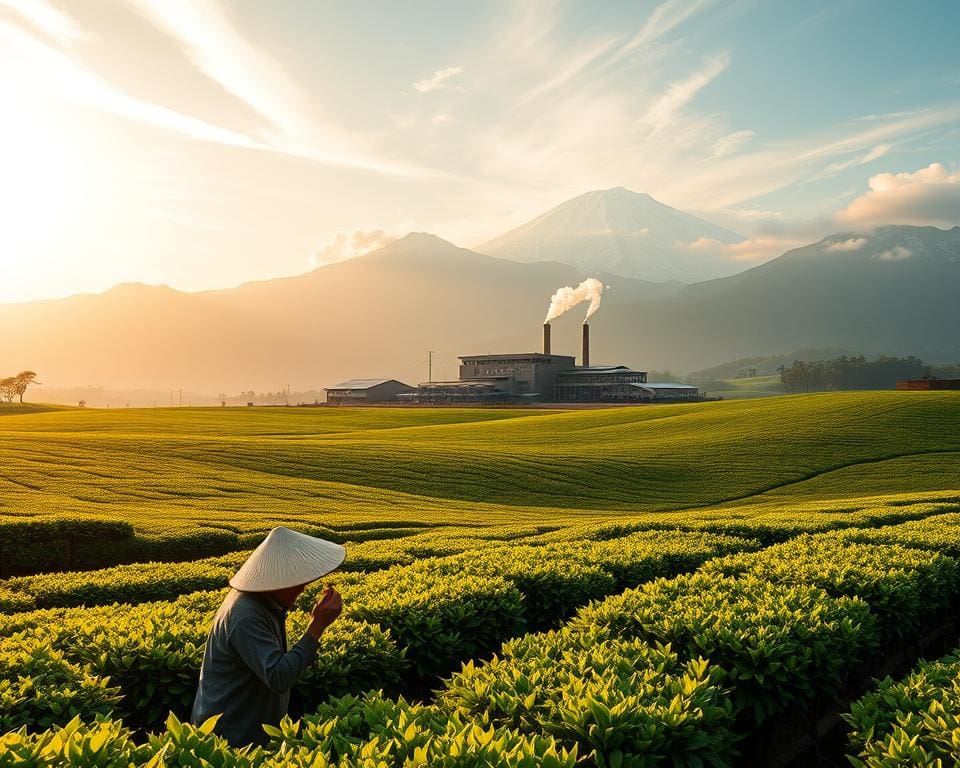Tea, a beverage steeped in centuries of tradition, resonates deeply across global cultures, igniting curiosity about which country drinks most tea. As we embark on this exploration, we will unveil the intricate tapestry of tea consumption by country, shedding light on nations where tea holds a cherished place. With statistics highlighting the highest tea consumption per capita, we will uncover the rituals and stories behind this beloved drink. Understanding these dynamics enriches our appreciation for tea, revealing its role as a symbol of hospitality and a cornerstone of social interactions in diverse societies.
The Global Landscape of Tea Consumption
The journey of tea through history is a fascinating one, revealing the deep-rooted connections between cultures and their tea traditions. The richness of tea history spans centuries, illustrating how this beloved beverage has captivated societies around the globe. Initially embraced for its medicinal properties in ancient China, tea quickly transformed into a staple of social engagement and cultural expression.
The Rich History of Tea
Global tea consumption has its origins in China, where tea was first recorded over 5,000 years ago. Used primarily for healing and health benefits, it soon gained popularity for its flavour and invigorating qualities. As the knowledge of tea spread through trade routes, such as the Silk Road, it found its way into various cultures, each adapting its unique stamp onto this revered drink. This profound tea history illustrates not only the beverage’s evolution but also its role in shaping traditions that endure today.
The Evolution of Tea Traditions Around the World
As tea became a global phenomenon, distinctive tea traditions emerged, reflecting local customs and societal structures. In the United Kingdom, the afternoon tea ritual became a cherished social gathering, while Japan developed the aesthetic and spiritual practice of the tea ceremony, embodying elegance and mindfulness. Other cultures, such as those in India and Turkey, created their own tea traditions that celebrate hospitality and community. These rituals highlight how the simple act of drinking tea can foster connection and unity, revealing an artistic tapestry of culture and history.

Which Country Drinks Most Tea: A Closer Look
Understanding tea consumption by country involves exploring various dimensions of how cultures embrace this beloved beverage. Countries such as China and India lead the way, not only due to their historical ties to tea cultivation but also because tea holds significant cultural importance. This section elucidates what shapes this vibrant tea landscape.
Defining Tea Consumption by Country
Tea consumption by country varies widely, reflecting both preference and accessibility. For instance, statistical data reveals that China consumes more tea than any other nation, followed closely by India, where chai is deeply rooted in everyday life. In contrast, the United Kingdom showcases its own unique tea traditions through afternoon tea rituals and diverse blends.
Factors Influencing Tea Drinking Habits
Several factors influencing tea drinking habits contribute to these patterns. Climate plays a substantial role; warmer regions may prefer iced varieties, while cooler climates often favour hot brews. Historical background influences preferences as well. Countries with a legacy of tea production, like Sri Lanka and Kenya, possess a unique palate developed through generations. The cultural significance of tea further solidifies its position within daily routines. Social settings, such as tea ceremonies in Japan, underscore its ceremonial value throughout history.
Top Tea Drinking Nations and Their Preferences
The world of tea showcases vibrant cultures and traditions, deeply intertwined with the daily lives of millions. Among the top tea drinking nations, several countries not only dominate in consumption but also exhibit unique preferences for diverse types of tea. Understanding these preferences provides insight into the social and cultural fabric of each nation.
Key Players in Global Tea Consumption
Countries like China, India, Turkey, and the UK stand out in global tea consumption statistics, making them key players in the industry. China is renowned for its rich heritage in tea drinking, with green and oolong teas being among the most favoured. India, on the other hand, is famous for its robust Assam and Darjeeling teas, beloved for their strong flavours. Turkey has a unique tradition where tea is integral to social gatherings, favouring çay, a black tea served in small tulip-shaped glasses. The UK, celebrated for its afternoon tea ritual, predominantly enjoys black tea blends such as Earl Grey and English Breakfast.
Diverse Types of Tea Preferred by Different Countries
In these nations, the types of tea consumed often reflect local tastes and cultural practices. For instance, Chinese tea culture places significant emphasis on the art of tea preparation and tasting, leading to a wide variety of teas being appreciated. In contrast, India’s tea culture emphasizes strength and a robust flavour profile, typically enjoyed with milk and spices.
- China: Green tea, Oolong tea
- India: Assam tea, Darjeeling tea
- Turkey: Black tea (çay)
- United Kingdom: English Breakfast tea, Earl Grey tea
Exploring the preferences of these top tea drinking nations reveals not just their consumption habits but also the underlying traditions that unite people through the enjoyment of this cherished beverage.
Global Tea Consumption Statistics and Trends
As the world continues to embrace tea, understanding the global tea consumption statistics offers valuable insights into trends and shifts in preferences. Yearly consumption figures show not only the popularity of traditional tea-drinking nations but also highlight rising markets that are beginning to appreciate this beloved beverage.
Yearly Consumption Figures
Current figures reveal substantial growth in tea consumption worldwide. Countries such as China and India still dominate the statistics, yet emerging markets are beginning to alter the landscape. The yearly consumption figures indicate a trend where developed nations, including the United States and parts of Europe, are increasing their tea intake, often shifting towards specialty and premium blends.
Emerging Markets and Changing Patterns
Changes in global tea consumption statistics further illustrate how preferences are evolving. Younger consumers gravitate towards herbal teas and unique flavour combinations, signalling a shift from traditional offerings. As cultural exchange accelerates, countries in the Middle East and North America reflect these changing tea consumption patterns. This creates opportunities for brands that cater to diverse tastes, affirming the tea industry’s potential for expansion in less traditional markets.
Highest Tea Consumption per Capita: The Leaders
When examining the highest tea consumption per capita, certain countries emerge as leaders, illustrating a deep-rooted cultural affinity for this beloved beverage. While China’s massive population ensures its status as the largest overall consumer of tea, nations like Turkey and Ireland showcase extraordinary per capita figures that reflect tea’s integral role in their daily lives. In Turkey, tea is not just a drink but a social ritual, often served in traditional tulip-shaped glasses, emphasizing hospitality and communal bonding.
Inevitably, the countries that consume the most tea often demonstrate unique traditions that celebrate its importance. For instance, in Ireland, tea time serves as a cherished daily custom, a perfect opportunity for families and friends to gather and enjoy pastries alongside their cuppa. This daily ritual enhances the cultural significance of tea, reinforcing its standing as more than just a refreshment but as a cornerstone of their societal fabric.
Moreover, the health benefits associated with tea consumption have contributed to its status throughout various cultures. From the antioxidant properties of green tea in Japan to the soothing herbal blends enjoyed in many Middle Eastern countries, the diverse varieties of tea reflect local preferences and lifestyle choices. Thus, as these nations continue to embrace tea, they not only honour a long-standing history but also secure tea’s legacy as a vital component of their identity and wellbeing.









